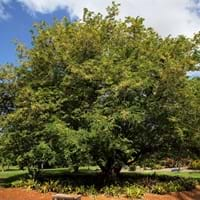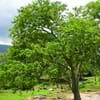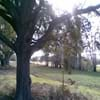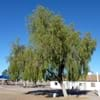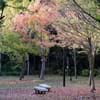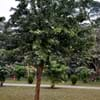What is
Life Span
Perennial
Perennial
Type
Tree
Tree
Origin
Africa, South-Eastern Asia
Africa, India, Southeast Asia
Types
Not Available
Sweet Tamarind, Australian tamarind, Manila tamarind, Velvet tamarind, Spanish Tamarind
Habitat
Subtropical forests, Tropical regions
Subtropical climates, Tropical regions
USDA Hardiness Zone
5-9
9-11
AHS Heat Zone
9 - 5
Not Available
Sunset Zone
1a, 1b, 2a, 2b, 3a, 3b, 7, 8, 9, 10, 11, 14, 18, 19, 20, 21
Not Available
Habit
Clump-Forming
Spreading
Information
Plant Size
Minimum Height
300.00 cm
99+
1,800.00 cm
24
Minimum Width
45.70 cm
99+
800.00 cm
25
Plant Color
Flower Color
Pale Yellow, Yellow green
Red, Yellow
Flower Color Modifier
Bicolor
Bicolor
Fruit Color
Green, Light Green
Brown
Leaf Color in Spring
Green
Green
Leaf Color in Summer
Light Green
Dark Green, Green
Leaf Color in Fall
Green, Light Green
Dark Green, Yellow green
Leaf Color in Winter
Brown, Light Yellow, Tan
Dark Brown, Green
Shape
Leaf Shape
Oval
Pinnate
Thorns
No
Yes
Season
Plant Season
Summer, Fall, Winter
Spring, Summer, Fall, Winter
Growing Conditions
Sunlight
Full Sun
Full Sun, Partial Sun
Growth Rate
Medium
Slow
Type of Soil
Clay, Loam, Sand
Clay, Loam, Sand
The pH of Soil
Acidic, Neutral, Alkaline
Acidic
Soil Drainage
Average
Average
Bloom Time
Summer, Late Summer, Early Fall
Late Spring
Repeat Bloomer
No
Yes
Tolerances
Pollution, Drought, Salt
Drought, Salt
Care
Where to Plant?
Ground
Ground
How to Plant?
Seedlings, Stem Cutting
Layering, Seedlings, Transplanting
Plant Maintenance
Medium
Low
Watering Plants
Watering Requirements
Needs less watering
Do Not over Water, Keep the ground moist but not water-logged
In Summer
Lots of watering
Lots of watering
In Spring
Moderate
Moderate
In Winter
Average Water
Average Water
Soil
Soil pH
Acidic, Neutral, Alkaline
Acidic
Soil Type
Clay, Loam, Sand
Clay, Loam, Sand
Soil Drainage Capacity
Average
Average
Sun Exposure
Full Sun
Full Sun, Partial Sun
Pruning
A hard prune may be necessary if the plant becomes woody, Cut upper 1/3 section when young to enhancegrowth, Remove damaged leaves, Remove dead branches, Remove dead leaves
Remove damaged leaves, Remove dead branches, Remove dead leaves
Fertilizers
10-10-10 diluted liquid fertilizer, All-Purpose Liquid Fertilizer, Compost
6-6-6 or 8-8-8
Pests and Diseases
Aphids, Downy mildew, Purple Blotch, Red blotch
Aphids, Borers, Mealybugs, Onion thrips, Root weevil, Soft scales, Whiteflies
Plant Tolerance
Drought, Salt and Soil Compaction, Shade areas
Drought
Facts
Flowers
Showy
Showy
Flower Petal Number
Single
Single
Fruits
Showy Fruit
Yes
No
Edible Fruit
No
Yes
Fragrance
Fragrant Flower
No
Yes
Fragrant Fruit
No
No
Fragrant Leaf
No
No
Fragrant Bark/Stem
No
No
Showy Foliage
Yes
No
Showy Bark
No
No
Foliage Texture
Fine
Bold
Foliage Sheen
Glossy
Matte
Evergreen
No
Yes
Invasive
Sometimes
No
Self-Sowing
Yes
Yes
Attracts
Bees, Flies, pollinators
Beetles, Birds, Scale Insects
Allergy
conjunctivitis, sneezing
Diarrhea, Hives, Nausea, Vomiting
Benefits
Uses
Aesthetic Uses
Not Available
Beautification
Beauty Benefits
Making cosmetics, Not Available
Glowing Skin, Good for skin, Improve skin tone, Reduces ageing, Skin cleanser
Edible Uses
Yes
Yes
Environmental Uses
Air purification, Shadow Tree, Soil protection
Food for animals, Food for birds, Food for insects, Nesting sites for birds
Plant Benefits
Medicinal Uses
Cardiovascular problems, Detoxifies lever, Diabetes, Dysentry, Jaundice, Menstrual Disorders
Antioxidants, Inflammation, Rheumatism, Skin Disorders, Sore throat
Part of Plant Used
Inner Bark, Leaf Stalks
Flowers, Fruits, Leaves
Other Uses
Can be made into a herbal tea, Oil is used for aromatherapy, Used as a fodder tree in agricultural areas
Culinary use, Used as a nutritious food item, Used as Ornamental plant, Used for its medicinal properties
Used As Indoor Plant
No
No
Used As Outdoor Plant
Yes
Yes
Garden Design
Dried Flower/Everlasting, Lawns and Turf, Mixed Border, Wildflower
Edible, Fruit / Fruit Tree, Shade Trees
Scientific Name
Botanical Name
Terminalia arjuna
Tamarindus indica
Common Name
Arjuna
Tamarind tree, Tamarind
In Hindi
अर्जुन वृक्ष
इमली का पेड़
In German
Terminalia arjuna
Tamarinde
In French
Terminalia arjuna
tamarinier
In Spanish
Migdałecznik arjuna
tamarindo
In Greek
arjuna
δέντρο Tamarind
In Portuguese
Migdałecznik arjuna
tamarindo
In Polish
Migdałecznik arjuna
drzewo tamaryndowca
In Latin
arjuna
tamarind ligno
Classification
Kingdom
Plantae
Plantae
Phylum
Magnoliophyta
Magnoliophyta
Class
Not Available
Magnoliopsida
Order
Myrtales
Fabales
Family
Poaceae
Fabaceae
Genus
Terminilia
Tamarindus
Clade
Angiosperms, Eudicots, Rosids
Angiosperms, Eudicots, Rosids
Tribe
Not Available
Detarieae
Subfamily
Not Available
Caesalpinioideae
Number of Species
100
99+
Not Available
|
||
|
||
|

